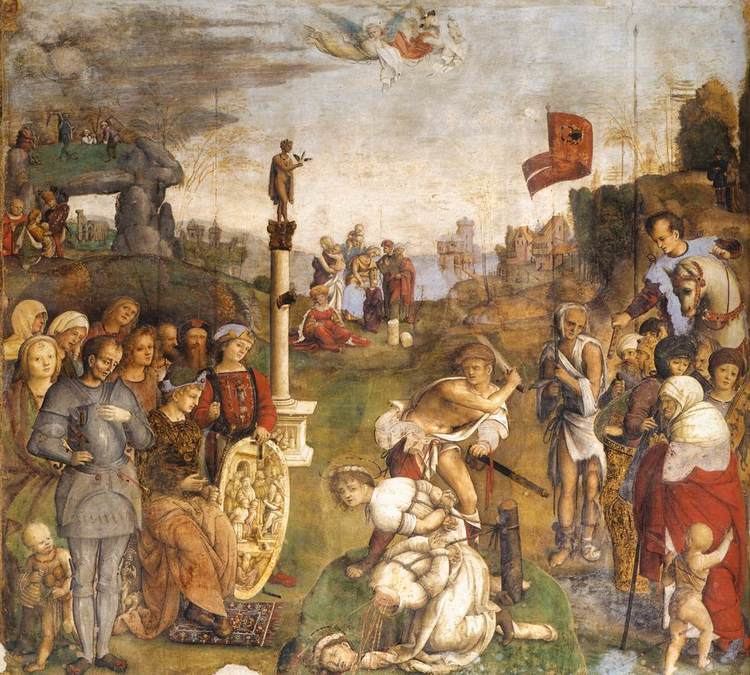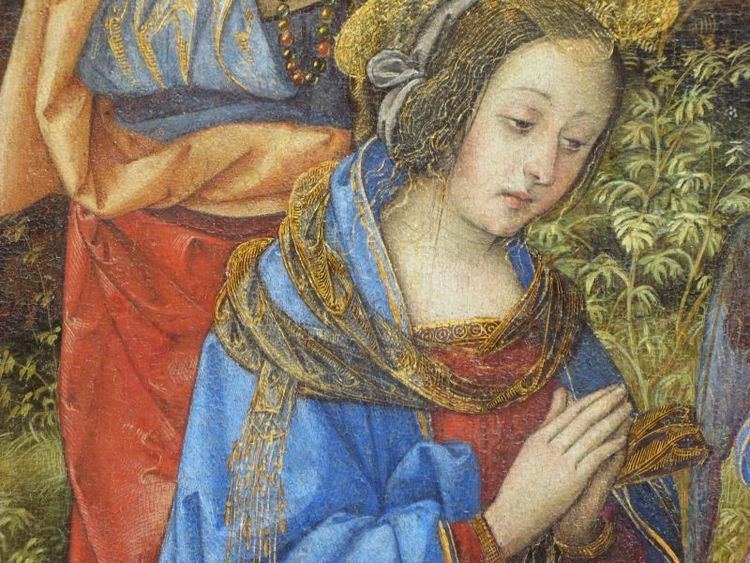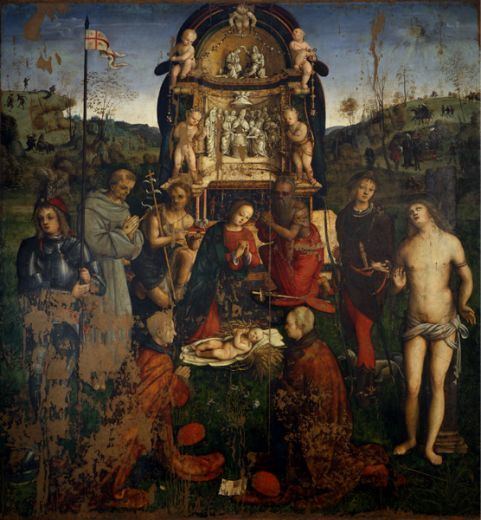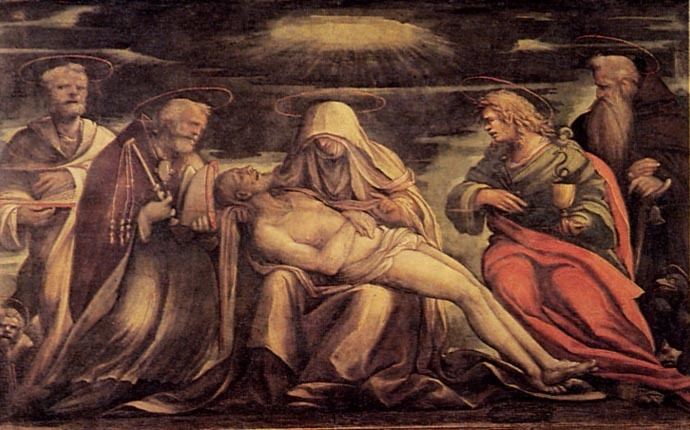Name Amico Aspertini | ||
 | ||
La santa allegrezza nccp amico aspertini
Amico Aspertini (c. 1474 – 1552), also called Amerigo Aspertini, is an Italian Renaissance painter whose complex, eccentric, and eclectic style anticipates Mannerism. He is considered one of the leading exponents of the Bolognese School of painting.
Contents

Amico aspertini
Biography

He was born in Bologna to a family of painters (including Giovanni Antonio Aspertini, his father, and Guido Aspertini, his brother), and studied under masters such as Lorenzo Costa and Francesco Francia. He traveled to Rome with his father in 1496, and is briefly documented there again between 1500–1503, returning to Bologna thereafter and painting in a style influenced by Pinturicchio and Filippino Lippi (whose work the critic Roberto Longhi suggested [in Officina ferrarese, 1934] he may have seen in Florence before 1500). To his Roman years belong at least two collections of drawings, the "Parma Notebook" (Taccuino di Parma) and the Wolfegg Codex. In Bologna in 1504, he joined Francia and Costa in painting frescoes for the Oratory of Santa Cecilia next to San Giacomo Maggiore, a work commissioned by Giovanni II Bentivoglio.

In 1508-1509, while in exile from Bologna following the fall of the Bentivoglio family, Aspertini painted the splendid frescoes in the Chapel of the Cross in the Basilica di San Frediano in Lucca (a church, like the Oratory of Santa Cecilia, maintained by Augustinian friars). Aspertini was also one of two artists chosen to decorate a triumphal arch for the entry into Bologna of Pope Clement VII and Emperor Charles V in 1529.

He died in Bologna.
Giorgio Vasari describes Aspertini as having an eccentric personality: half-insane but ambidextrous, he worked so rapidly with both hands that he was able to divide chiaroscuro between them, painting chiaro with one hand and scuro with the other. Vasari also quotes Aspertini as complaining that all his Bolognese colleagues were copying Raphael. Aspertini also painted façade decorations (all now lost), and altarpieces, many of which are often eccentric and charged in expression. For example, his Bolognese Pietà appears to occur in an other-worldly electric sky.
